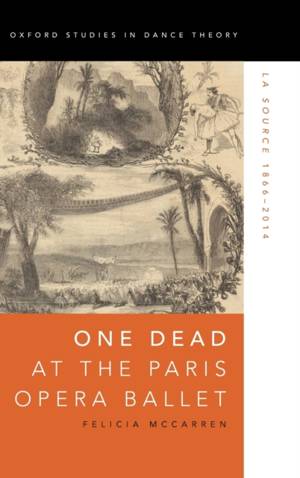
- Retrait gratuit dans votre magasin Club
- 7.000.000 titres dans notre catalogue
- Payer en toute sécurité
- Toujours un magasin près de chez vous
- Retrait gratuit dans votre magasin Club
- 7.000.0000 titres dans notre catalogue
- Payer en toute sécurité
- Toujours un magasin près de chez vous
Description
In 1866, when the ballet La Source debuted, the public at the Paris Opera may have been content to dream about its setting in the verdant Caucasus, its exotic Circassians, veiled Georgians, and powerful Khan. Yet the ballet's botany also played to a public thinking about ethnic and exotic others at the same time-and in the same ways-as they were thinking about plants. Along with these stereotypes, with a flower promising hybridity in a green ecology, and the death of the embodied Source recuperated as a force for regeneration, the ballet can be read as a fable of science and the performance as its demonstration. Programmed for the opening gala of the new Opera, the Palais Garnier, in 1875 the ballet reflected not so much a timeless Orient as timely colonial policy and engineering in North Africa, the management of water and women. One Dead at the Paris Opera Ballet takes readers to four historic performances, over 150 years, showing how-- through the sacrifice of a feminized Nature-- La Source represented the biopolitics of sex and race, and the cosmopolitics of human and natural resources. Its 2011 reinvention at the Paris Opera, following the adoption of new legislation banning the veil in public spaces, might have staged gender and climate justice in sync with the Arab Spring, but opted instead for luxury and dream. Its 2014 reprise might have focused on decolonizing the stage or raising eco-consciousness, but exemplified the greater urgency attached to Islamist threat rather than imminent climate catastrophe, missing the ballet's historic potential to make its audience think.
Spécifications
Parties prenantes
- Auteur(s) :
- Editeur:
Contenu
- Nombre de pages :
- 226
- Langue:
- Anglais
- Collection :
Caractéristiques
- EAN:
- 9780190061814
- Date de parution :
- 11-02-15
- Format:
- Livre relié
- Format numérique:
- Genaaid
- Dimensions :
- 156 mm x 234 mm
- Poids :
- 496 g

Les avis
Nous publions uniquement les avis qui respectent les conditions requises. Consultez nos conditions pour les avis.






